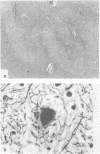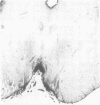Abstract
Clinical and neuropathological descriptions are given of four cases of an uncommon disease, characterised by simultaneous degeneration of the dentato-rubral and pallido-luysian systems. These four are compared with sixteen previously described cases, and the group as a whole is compared and contrasted with other multisystem degenerations, such as olivo-ponto-cerebellar atrophy and Friedreich's ataxia. A pathological feature described here for the first time is degeneration of the fastigio-vestibular system. Clinically, there are three main types of the disease; (1) an ataxo-choreoathetoid type, (2) a pseudo-Huntington type, and (3) a myoclonic-epileptic type. There are familial cases of types 2 and 3. Oculomotor disturbances, associated with atrophy of the brainstem tegmentum, are observed in cases of types 1 and 3.
Full text
PDF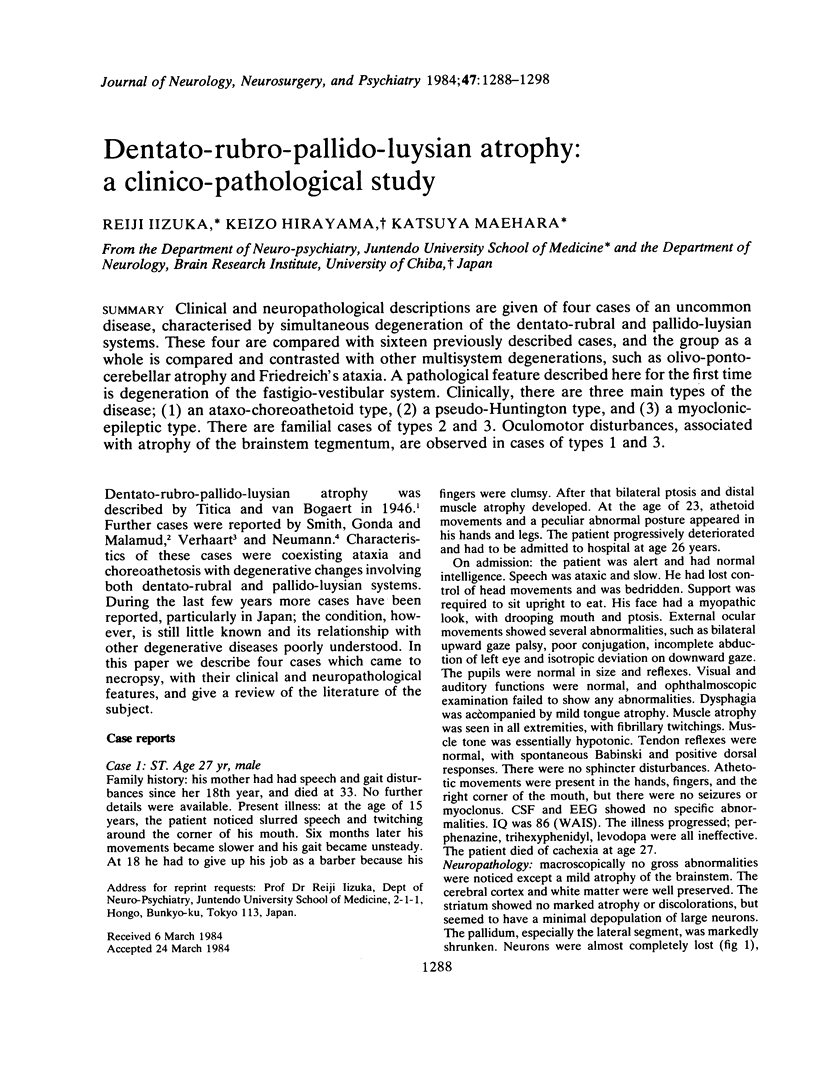
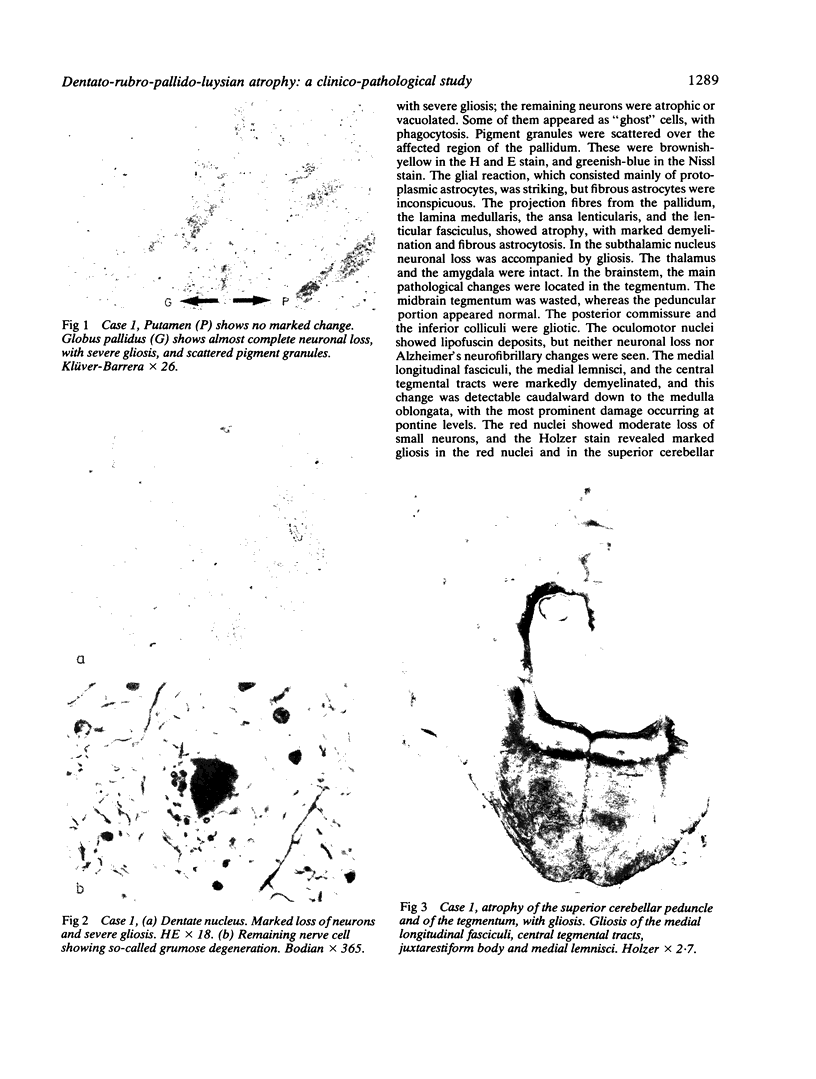
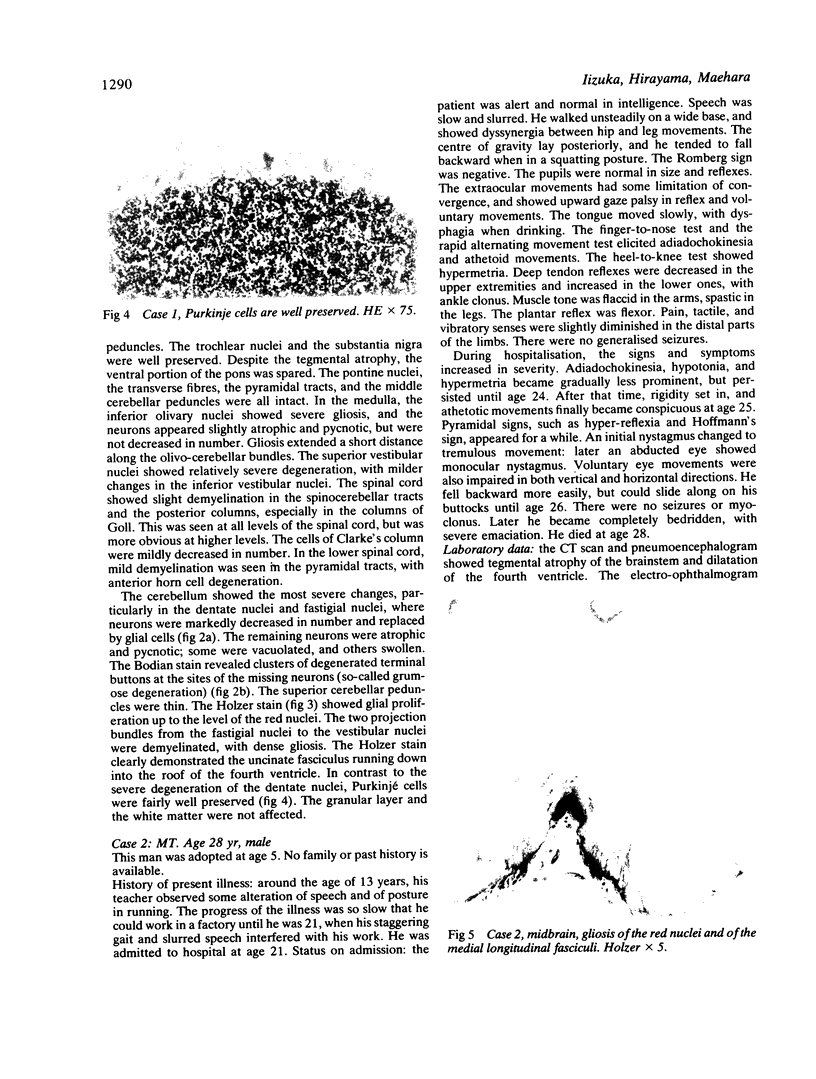
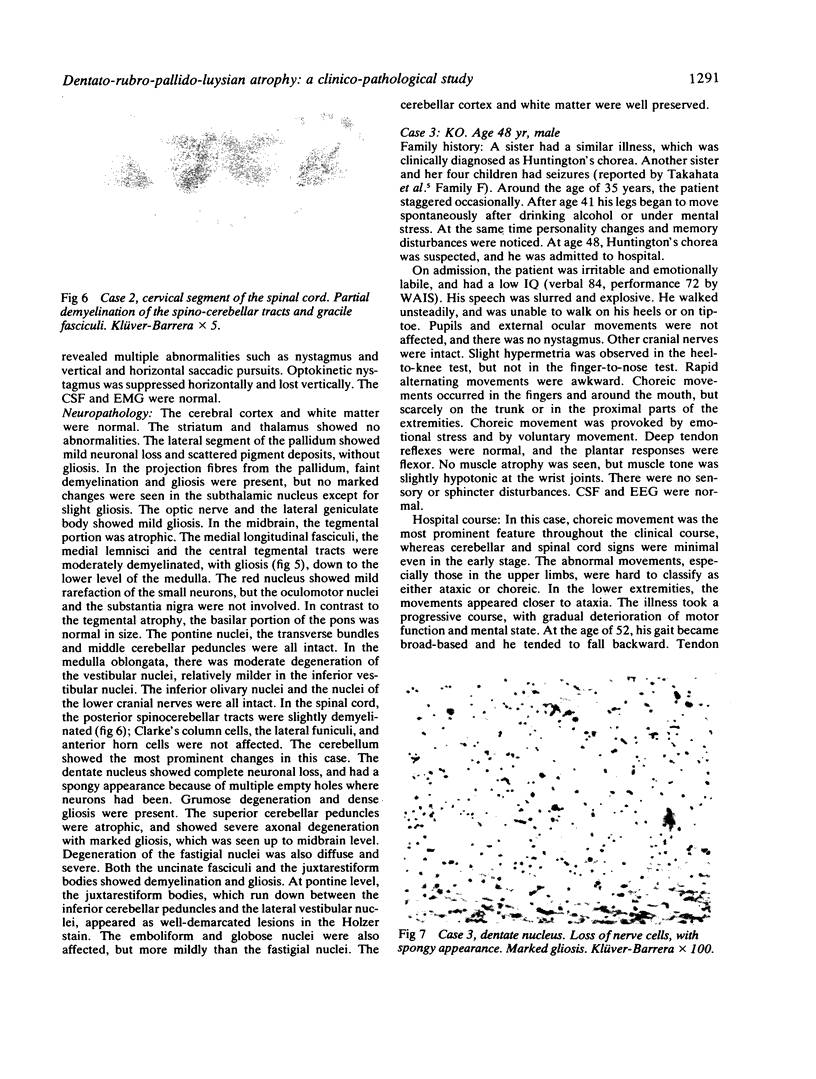
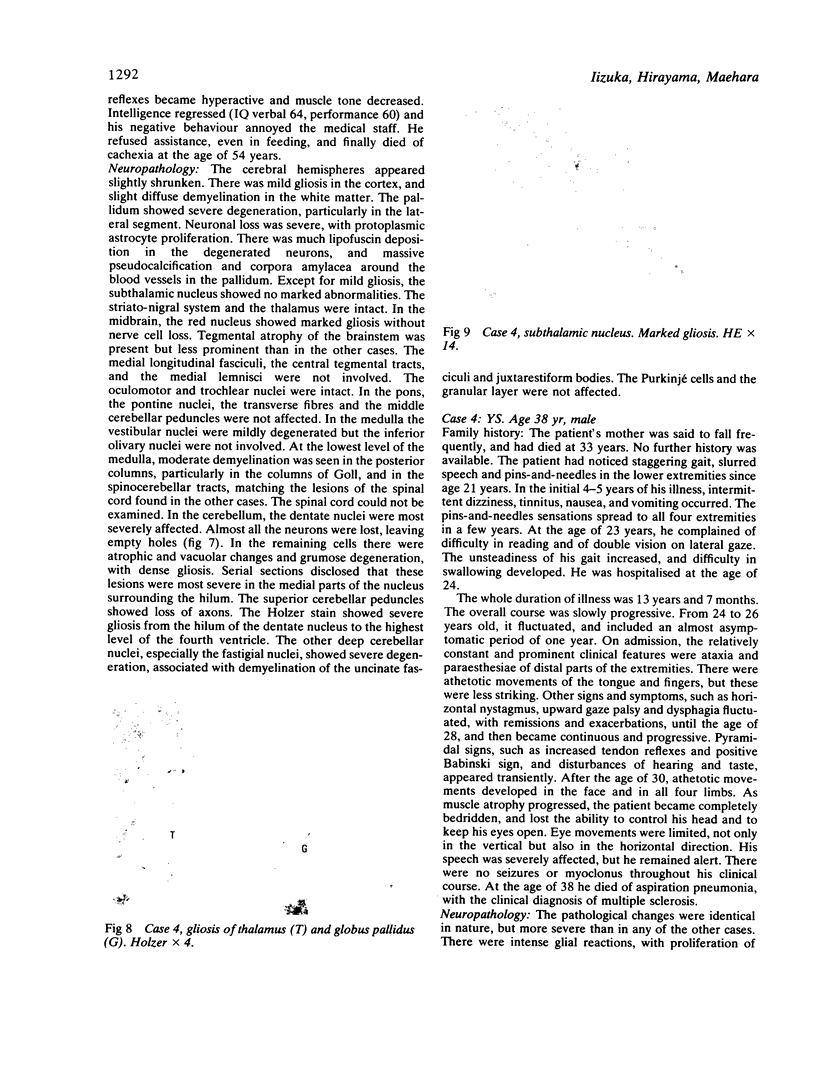
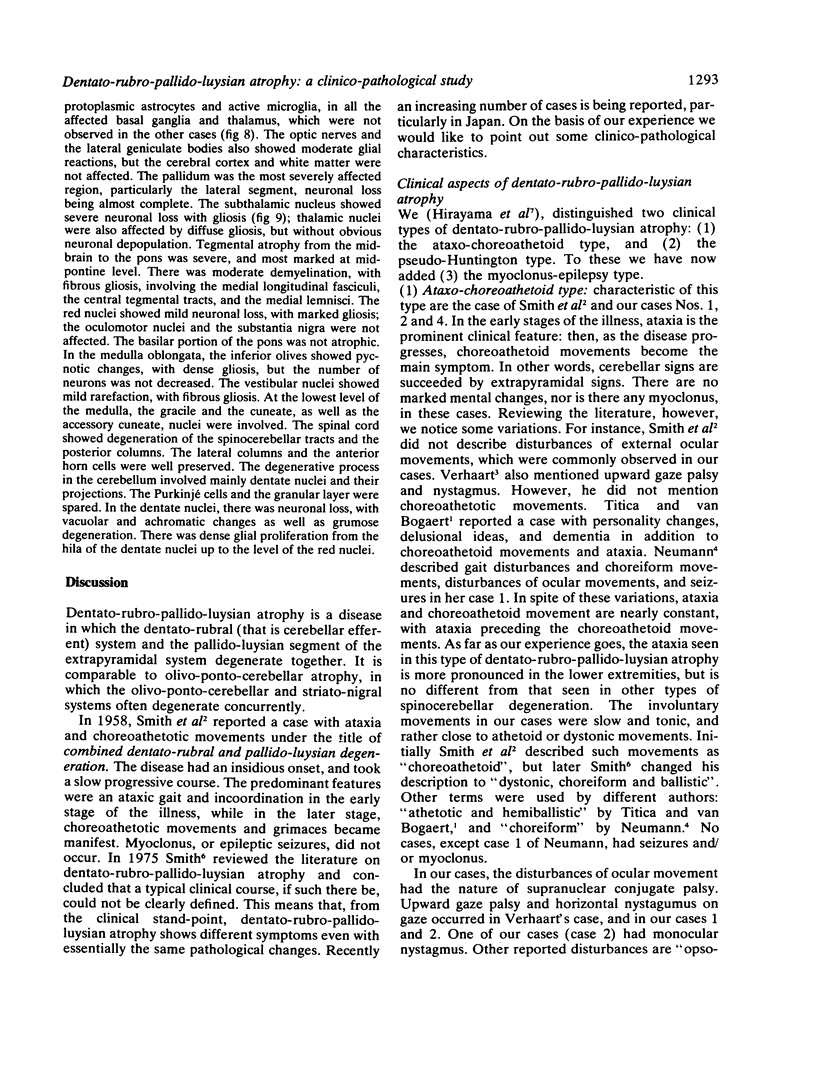
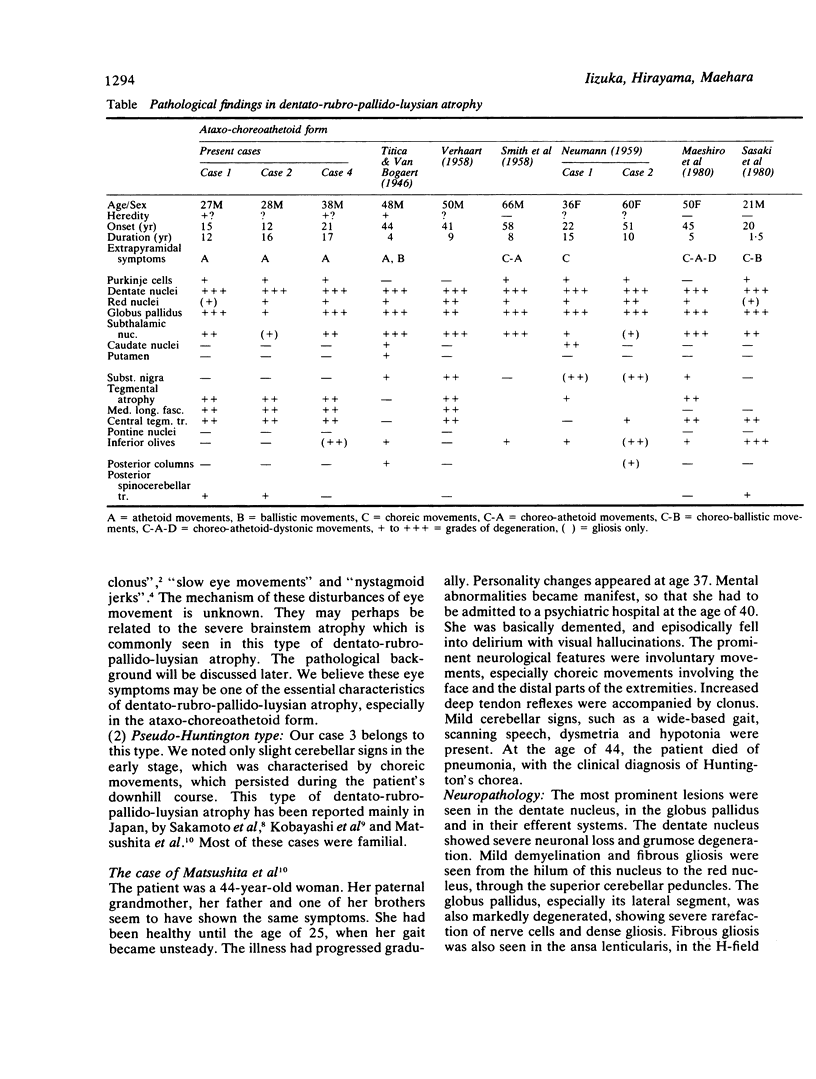
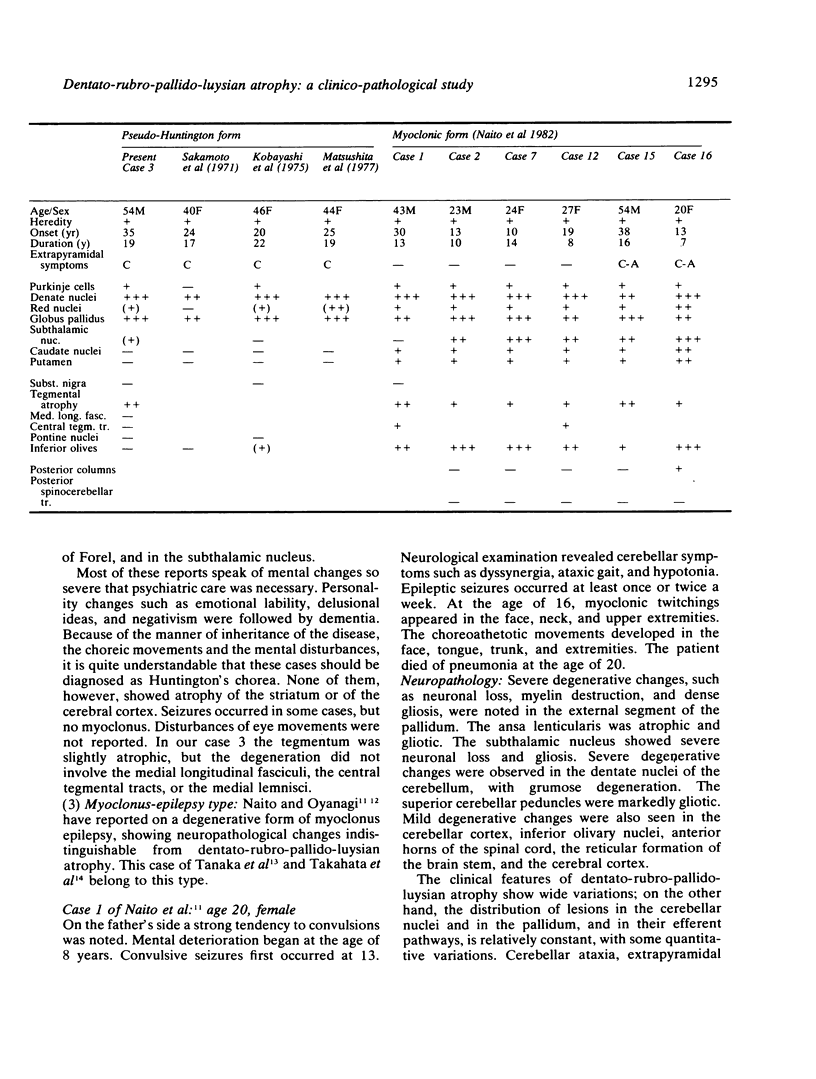
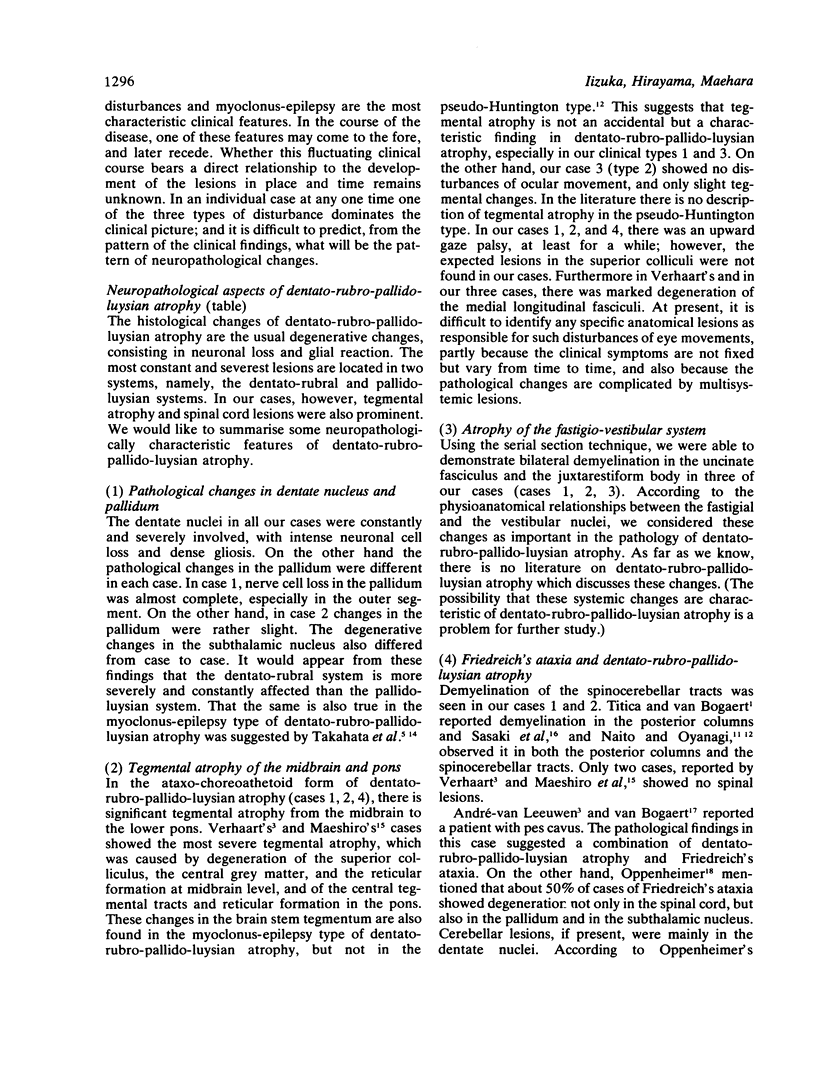
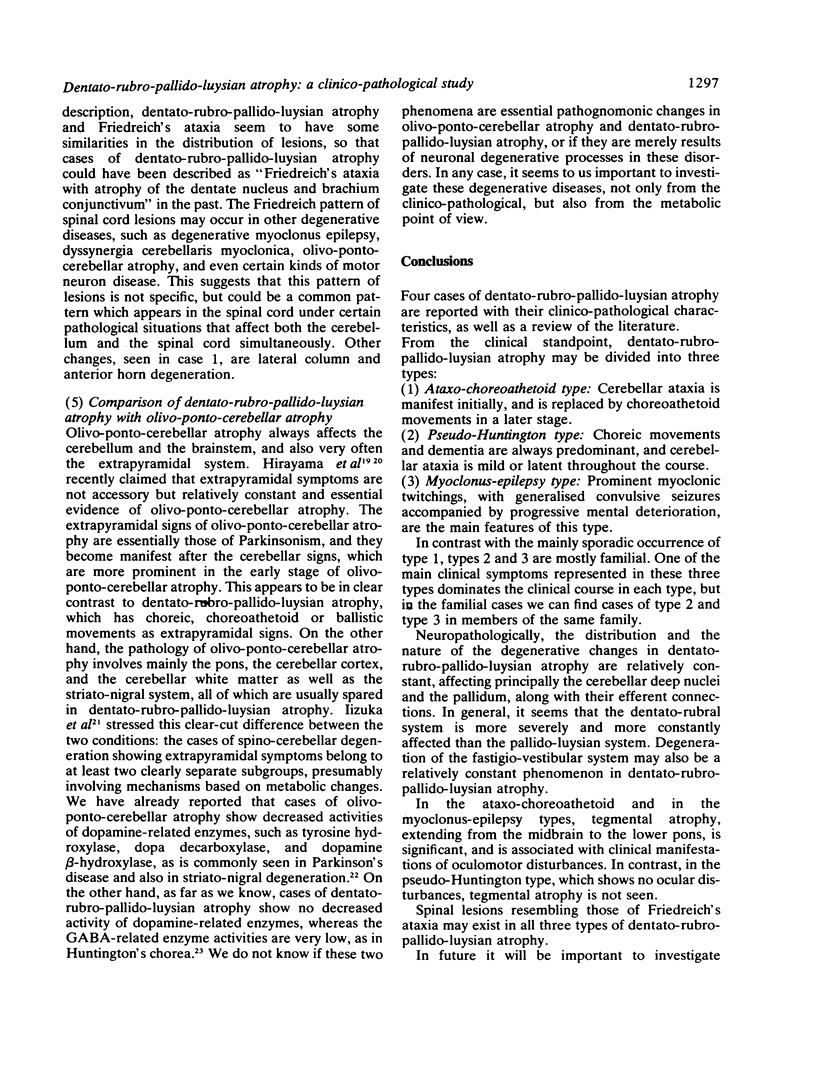
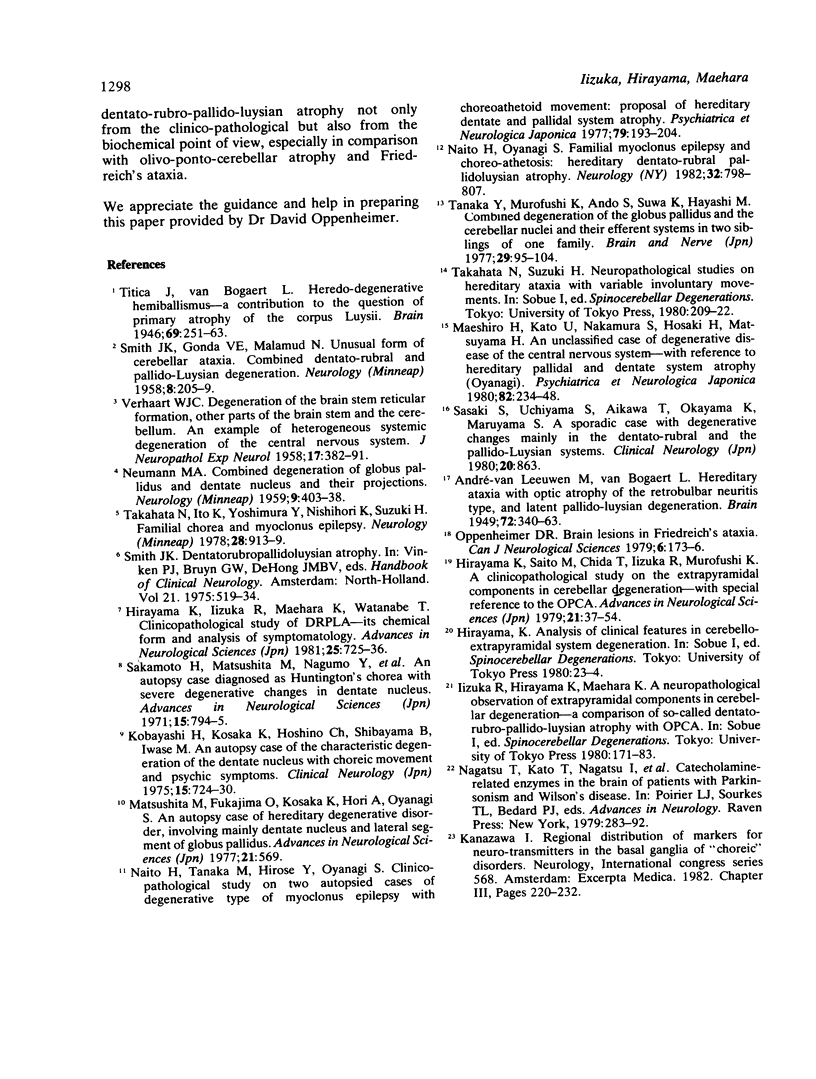
Images in this article
Selected References
These references are in PubMed. This may not be the complete list of references from this article.
- ANDRE-VAN LEEUWEN M., VAN BOGAERT L. Hereditary ataxia with optic atrophy of the retrobulbar neuritis type, and latent pallido-luysian degeneration. Brain. 1949 Sep;72(3):340-63, illust. doi: 10.1093/brain/72.3.340. [DOI] [PubMed] [Google Scholar]
- Maeshiro H., Kato U., Nakamura S., Hosaki H., Matsuyama H. [An unclassified case of degenerative disease of the central nervous system--with reference to "hereditary pallidal and dentate system atrophy (Oyanagi)" (author's transl)]. Seishin Shinkeigaku Zasshi. 1980;82(4):234–248. [PubMed] [Google Scholar]
- Naito H., Oyanagi S. Familial myoclonus epilepsy and choreoathetosis: hereditary dentatorubral-pallidoluysian atrophy. Neurology. 1982 Aug;32(8):798–807. doi: 10.1212/wnl.32.8.798. [DOI] [PubMed] [Google Scholar]
- Naito H., Tanaka M., Hirose Y., Oyanagi S. [Study on two autopsied cases of degenerative type of myoclonus epilepsy with choreo-athetoid movement: Proposal of hereditary dentate and pallidal system atrophy (author's transl)]. Seishin Shinkeigaku Zasshi. 1977;79(4):193–204. [PubMed] [Google Scholar]
- Oppenheimer D. R. Brain lesions in Friedreich's ataxia. Can J Neurol Sci. 1979 May;6(2):173–176. doi: 10.1017/s0317167100119596. [DOI] [PubMed] [Google Scholar]
- SMITH J. K., GONDA V. E., MALAMUD N. Unusual form of cerebellar ataxia; combined dentato-rubral and pallido-Luysian degeneration. Neurology. 1958 Mar;8(3):205–209. doi: 10.1212/wnl.8.3.205. [DOI] [PubMed] [Google Scholar]
- Takahata N., Ito K., Yoshimura Y., Nishihori K., Suzuki H. Familial chorea and myoclonus epilepsy. Neurology. 1978 Sep;28(9 Pt 1):913–919. doi: 10.1212/wnl.28.9.913. [DOI] [PubMed] [Google Scholar]
- Tanaka Y., Murofushi K., Ando S., Suwa K., Hayashi M. [Combined degeneration of the globus pallidus, cerebellar nuclei and their efferent systems in 2 siblings; primary systemic degeneration of the globus pallidus and the cerebellar nuclei]. No To Shinkei. 1977 Jan;29(1):95–104. [PubMed] [Google Scholar]
- VERHAART W. J. Degeneration of the brain stem reticular formation, other parts of the brain stem and the cerebellum; an example of heterogenous systemic degeneration of the central nervous system. J Neuropathol Exp Neurol. 1958 Apr;17(2):382–391. doi: 10.1097/00005072-195804000-00021. [DOI] [PubMed] [Google Scholar]




